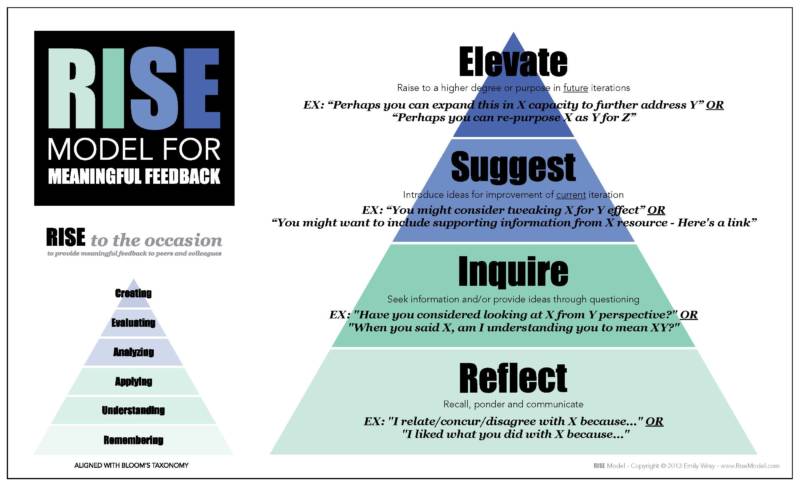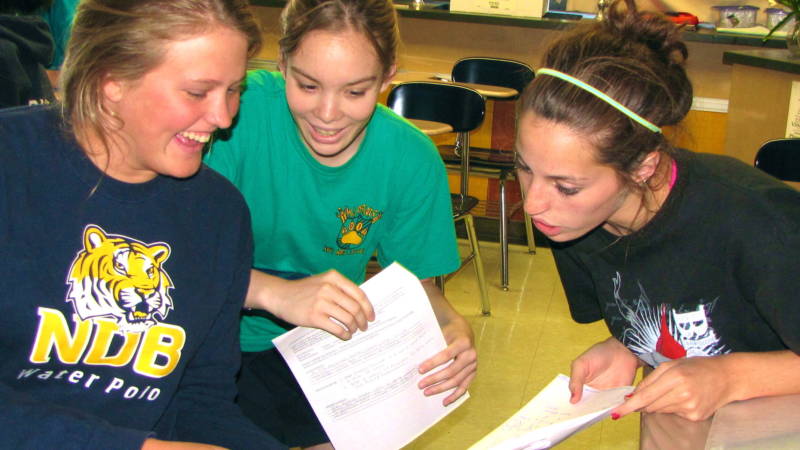Designing and deploying robust, interactive lessons that engage students with real-world problems that demand application of content to produce innovative solutions is both exciting and demanding. One of my critical challenges has been providing feedback to students about their performance. I always feel pressured for time to consistently connect with each of my students. I have learned that the 4Cs: communication, collaboration, critical thinking, and creativity can form a great frame for thinking about ways to engage students in a peer review process that teaches and reinforces these vital skills.
It was at a CUE Conference three years ago that I had an “Ah Ha” moment:
- Our learners will not be prepared for the 21st Century by relying on rote memory of content. They’ve got Google for that!
- To develop the 4Cs, I must provide experiences that enhance deeper learning.
- If learning happens best when students experience a lesson, then engaging students in the process of providing peer feedback is part of the learning!
- Extra bonus = each student receives timely feedback from multiple perspectives, their peers and me.
Since then, I have refocused the process of developing the skills students need to include providing meaningful feedback to their peers. During the process, students also develop their own voice as they reflect on their learning.
CREATE a culture of providing feedback.
Every year, I start by explaining the importance of feedback. There are endless resources like the Seven Keys to Effective Feedback, that support the benefits and describe how to provide meaningful feedback. You will have to commit time to the process. When students are comfortable with their peers, they are more likely to appropriately give and receive feedback that matters. We play games together and get to know one another. We focus on the goal of helping each other develop and improve.
I’ve learned that frequency is essential to creating a culture that values feedback. For example, we begin reflecting daily on short assignments like homework or a class activity. Think, Pair, Share can be a quick way to begin a face-to-face discussion. Students share their work with one another, giving informal, verbal feedback. The more often you practice the process, the more comfortable and confident the students become and their feedback skills improve. We build up to writing reflections on major papers, lab reports, and projects. In addition, giving students opportunities to incorporate the feedback and revise their work keeps the focus more on the process of learning instead of just the grade.
Learn the language of clear COMMUNICATION.
When I was in graduate school, I was introduced to the RISE Model developed by Emily Wray. (@EmilyWray). This invaluable resource has been my number one tool ever since.

Emily’s infographic outlines the language of feedback. Students will frequently say “great job” or “nice work” to their peers, but what does that mean? Providing examples of specific vocabulary to use opens up a whole new level of feedback. Students move through an organized process as they design responses that are meaningful and describe specifically what was “great” and what needs improvement. Emily has also designed an infographic for self-reflection!
Develop CRITICAL THINKING skills.
Meaningful feedback starts with understanding the content and expectations of an assignment. Last fall, my students competed in the Khan Academy Breakthrough Junior Challenge. Students created a video tutorial about a topic in science and were required to review other student entries from around the world. Many were challenged to review videos about unfamiliar topics. Most were unable to give specific, clear feedback if they did not understand the content of the tutorial.
